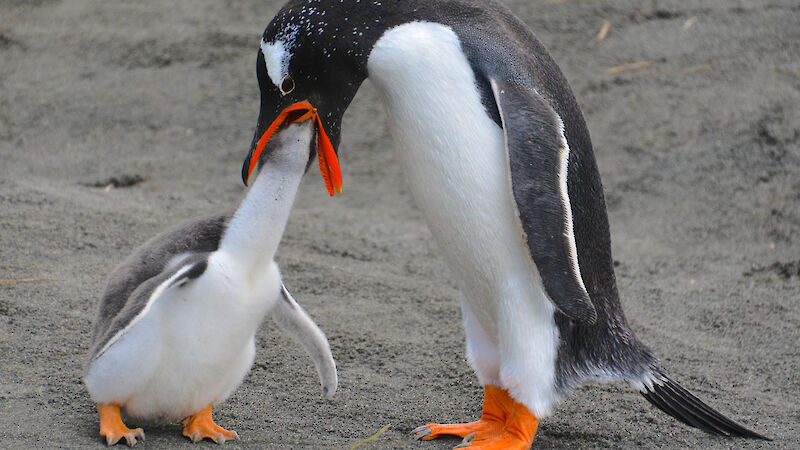Halfway between the Argentinian coast and the Antarctic Peninsula, the waters around South Georgia island are one of the most biologically rich places on the planet.
So rich in fact, that a quarter of the world's gentoo penguin population lives there, feeding on abundant Antarctic krill in the area.

The waters of South Georgia also support a krill fishery that takes on average about 43,000 tonnes a year, managed by the Commission for the Conservation of Antarctic Marine Living Resources (CCAMLR).
The krill fishery can only operate during the winter when many of the summer-breeding seals and penguins are dispersed away from the island.
The question is: do existing fisheries still pose a threat to populations of winter-resident predators, such as gentoo penguins, by directly competing for Antarctic krill?
To find out, a team from the British Antarctic Survey fitted 16 gentoo penguins (Pygoscelis papua) with satellite transmitters and recorded their movements for up to 76 days.
They also collected 600 poo samples from the colonies of the tagged gentoo penguins.
The job of Australian Antarctic Division scientists was to figure out what the penguins were eating, by analysing the DNA in the poo samples. It turns out that Antarctic krill accounts for just over one quarter of the total gentoo diet.
Gentoo penguins can switch from feeding on krill to fish, and krill availability is low during winter. However, there may not be enough fish during winter to compensate for the loss of krill from the diet. When krill availability is low, gentoo penguins also have to travel further to find their prey.
The authors suggest that improved information about the relationship between penguin movements and krill density would lead to enhanced management of biodiversity in the region.
The report says a "dynamic ocean management framework" that adjusts the segregation of fishing activities from nearshore predators based on environmental variability may reduce the potential for competition for krill while allowing a profitable fishery.






